Scenes and sharing data
Enterprise Edition
When you are working with a dataset, sometimes you may need more than one Scene to achieve your objective. By using the Scene button, you can expand the Scene panel from which you can add a new Scene, or rename, duplicate, or delete your existing Scene(s). The Scene panel is also where you switch between your Scenes, including any Scenes shared with you. If you have multiple Scenes saved, the search box allows you to filter through them.
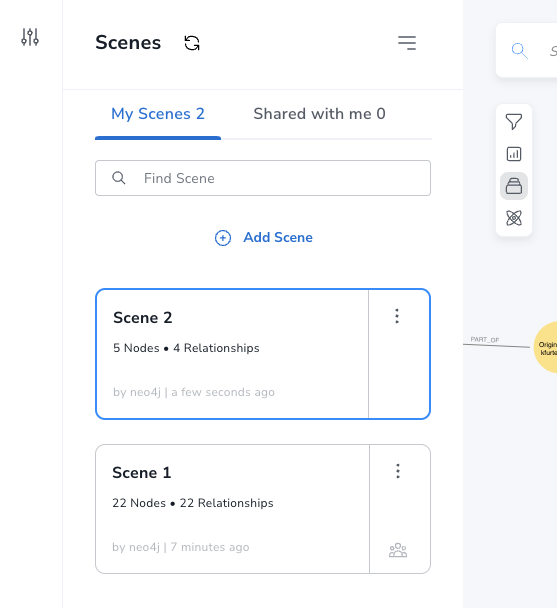
Whenever you make any changes to a Scene, i.e. any changes to filters, the graph, the visualization, or the style, the Scene is automatically saved. If you switch Scene, the Scene you left is the same when you return to it.
Style settings for a Scene is determined by the Perspective by default. If you change the styling, the changes only affect the current Scene and any new Scenes you create follow the Perspective styling. If you have write permission on the Perspective, you can choose to save the styling to the Perspective. This affects any new Scenes created, but not already existing Scenes.
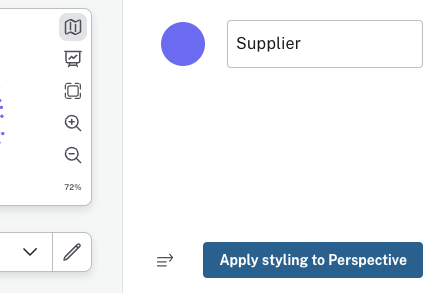
|
Scenes rely on node and relationship IDs in Neo4j. Changes to this underlying data can cause data in saved Scenes to appear incorrectly if IDs are reused by the database. |
Sharing options
Bloom allows you to share your insights. When you find an interesting Scene, you have different options to share it, depending on who you want to share it with. The options are accessed with the Export button in the top right corner of your Scene.
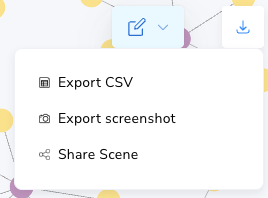
Screenshot
If you want to share your Scene with someone without access to the database, you can take a screenshot to export. This lets you to share your insights without allowing outside interaction with the elements in your Scene. The screenshot is captured and saved to your Downloads folder.
CSV files
The other option is to extract your results as CSV files.
This can be done in different ways.
You can export all the data in your Scene in one single CSV file, graph-export.csv, by leaving that box checked.
This option returns all the data for every relationship, i.e. start node info, end node info, as well as relationship info.
Additionally, you can add separate CSV files for nodes and relationships, respectively, by leaving those boxes checked as well.
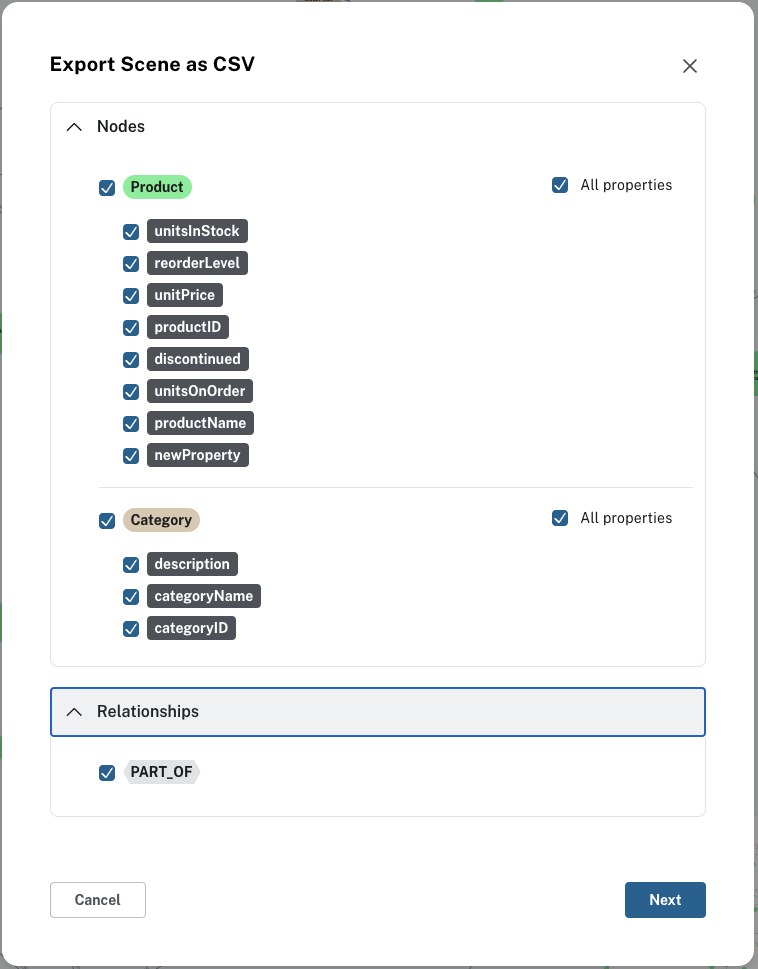
If you want to refine the results in the selected files (graph-export.csv, node-export.csv, and/or relationship-export.csv) you can enable/disable both node labels and relationship types to be included or excluded.
You can select which properties of both nodes and relationships to include/exclude as well.
By default, all boxes are checked and all labels and relationship types are enabled.
|
If the Scene only contains nodes and no relationships, both the |
Exporting data in a Scene as CSV files allows you to use your results in applications other than Bloom.
Share Scene
The third option is to share your Scene with other users of the same database. This allows the recipient to see what you see, but it does not allow them to make any changes. They can, however, duplicate the Scene and then alter it. If you want to share a starting point that allows interaction, consider using a deep link instead.
In addition to the Export button, you can also share a Scene from the Scene card.
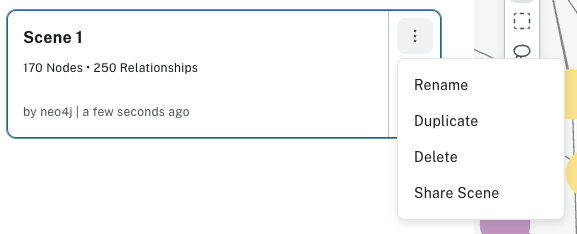
To share a Scene, you select which roles you wish to share it with. When a user with the selected role logs in to Bloom next time, they will see the Scene in their Scene panel under Shared with me. Alternatively, you can also use the Copy link button which creates a URL and copies it to your clipboard. You can send the link directly to any user with the specified role. The recipient pastes the link into their browser. They need to authenticate but will then be taken directly to the Scene in the applicable Perspective.
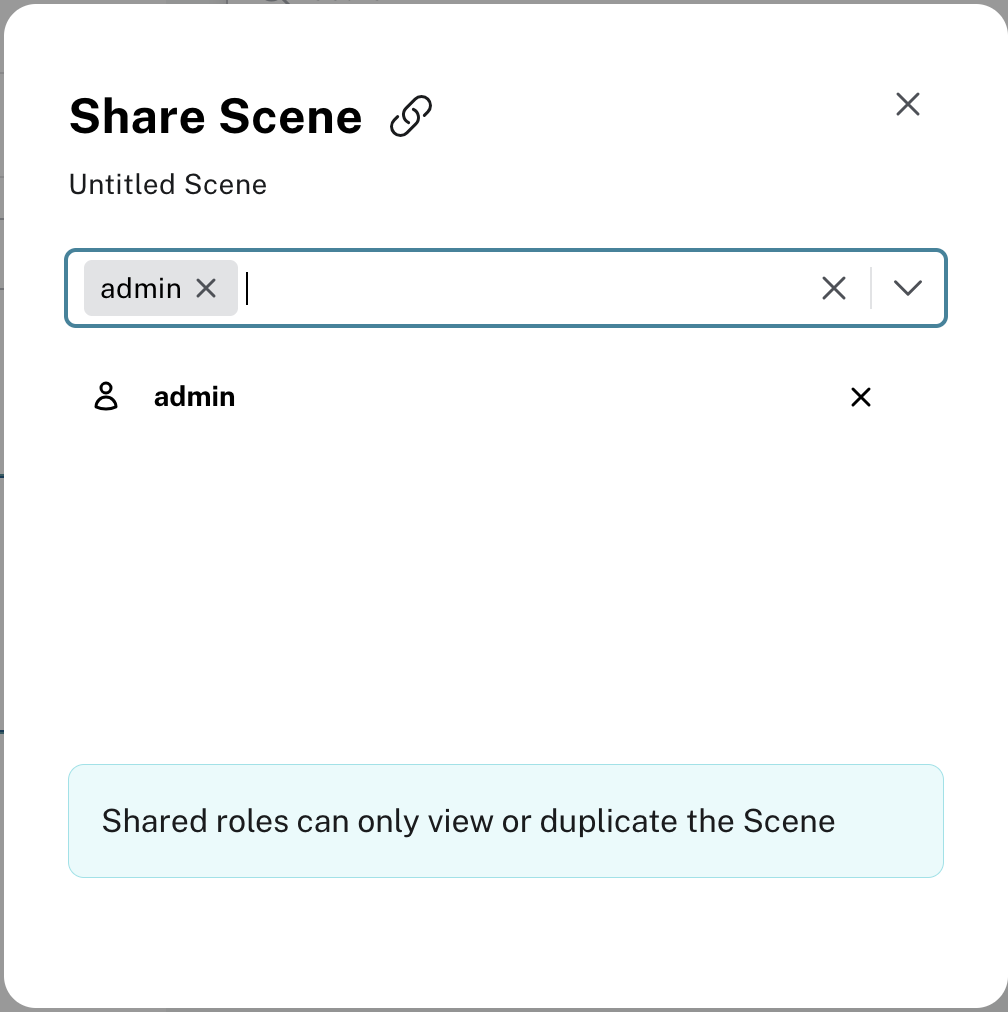
The roles available depends on which roles are available for sharing the current Perspective and can be managed in the Perspective drawer. See Storage and sharing for more information on roles and sharing. For more information on roles and their access, see Operations Manual → Authentication and authorization.
Any Scenes shared with you can be found in the Scene panel, expanded from the Scene button, as described earlier in this section.
When you create a Scene, you are its owner and only the owner of a Scene can make any changes to it. If a Scene has been shared with you, you can make a copy of it and save your own changes. Note that you need to have write access to the database to be able to make any changes at all.
|
The use of multiple Scenes and Scene sharing is only available when using the Bloom plugin. Other deployments allow only one Scene, but you can still export both screenshots of your Scene and as CSV files. |